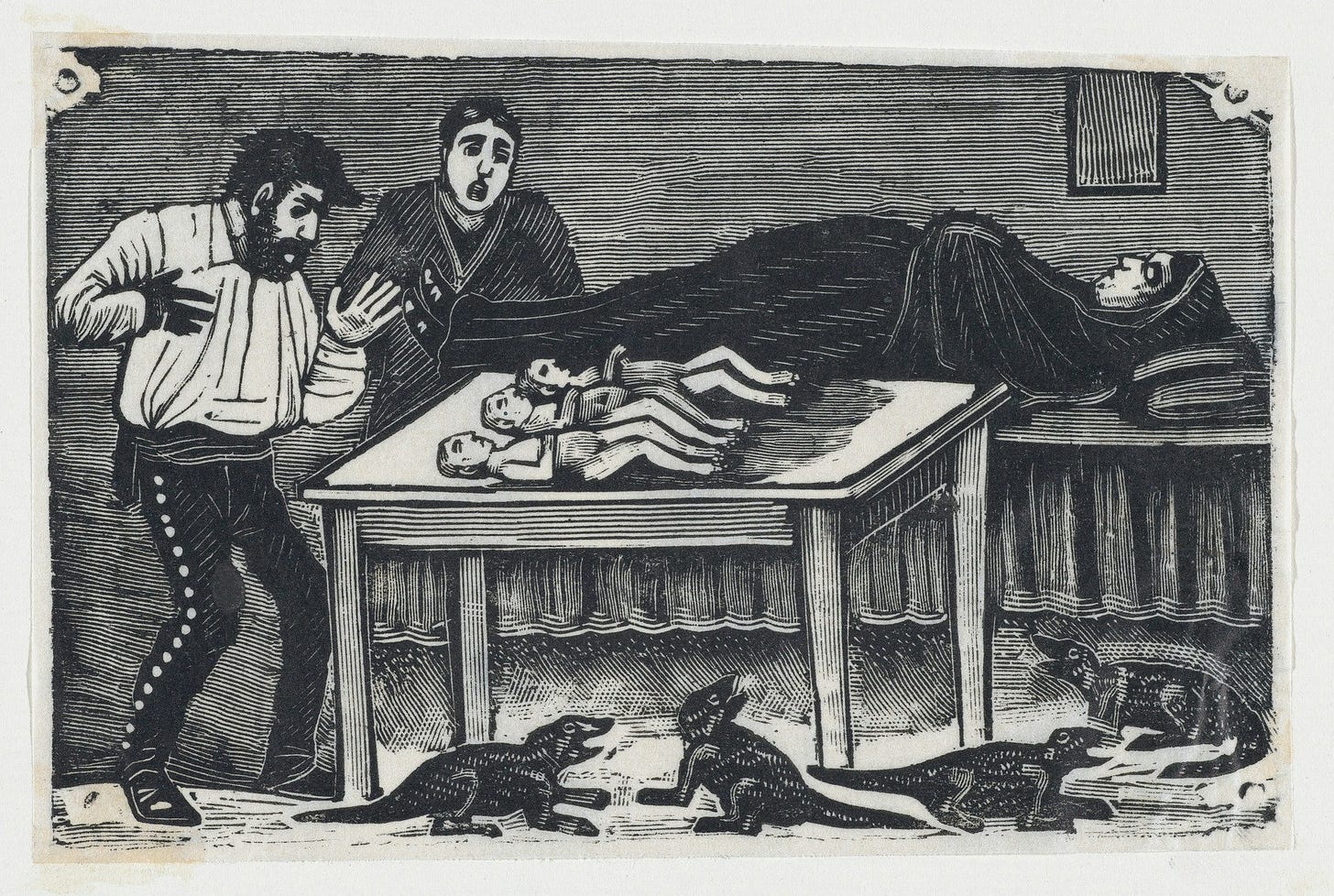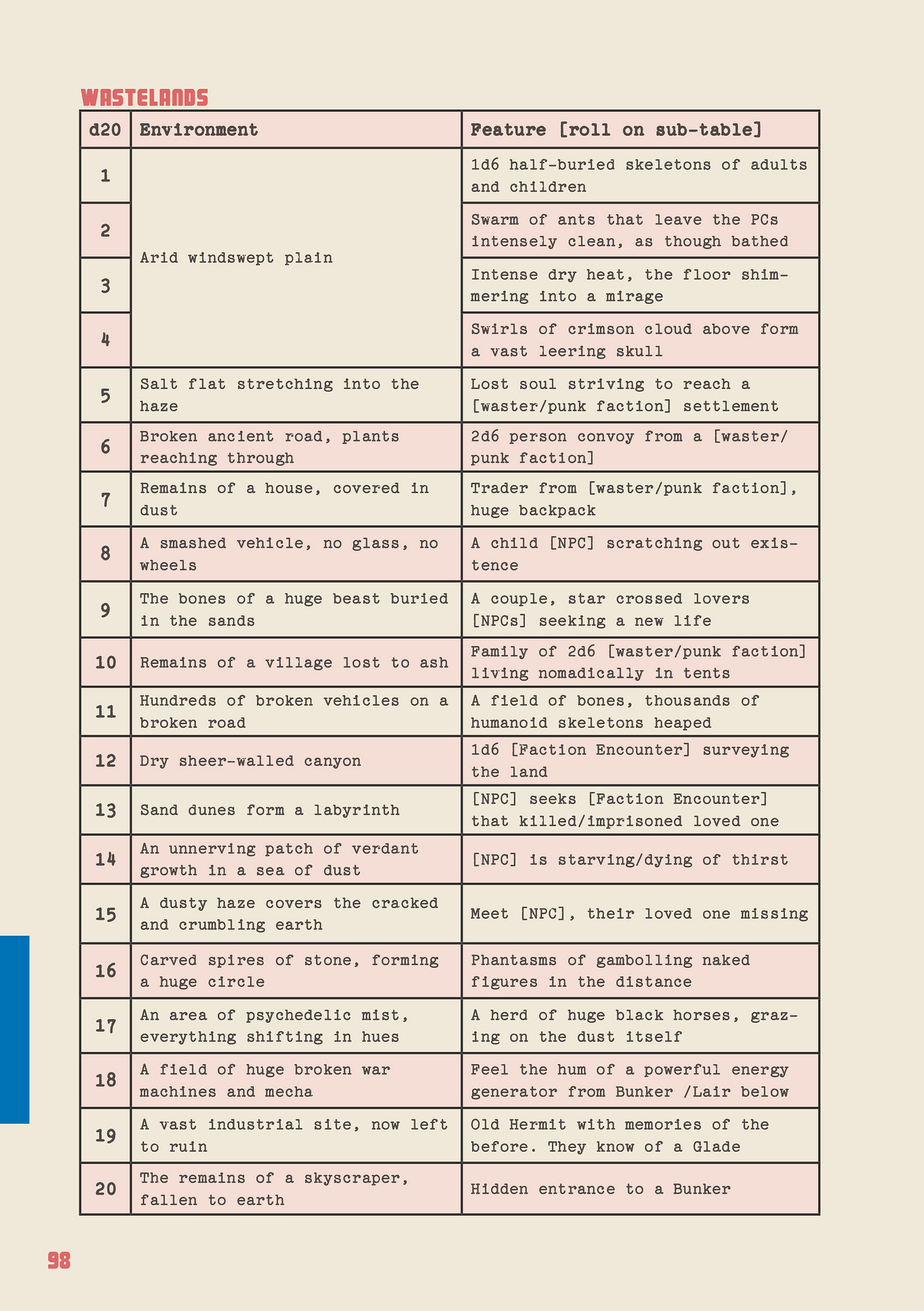Image: José Guadalupe Posada, A Woman Who Gave Birth to Three Children and Four Animals, ca. 1894 (A picture of a Table and a picture full of story!)
I’ve written several games where events are randomly generated, combining “sparks”, as Chris McDowall would say, into inspiration for what happens at the table. I like to expand these a bit for my tables. Obviously this means they’re less universally applicable, but it also means they have more specificity. You can use the table entries to more precisiely convay the setting, the table becoming a list of vingettes, short stories about the world you’re helping create at the table.
Here’s some pointers for writing these sorts of tables.
Try to tell a story with every entry. In an item table “A love letter” tells a story, that people in the world have inner lives . “A box of matches” tells a story that this is an uncommon thing in this setting, and useful.
For randomly created rooms, I’d try to combine several elements, 2 or 3 tables to create one room. Less and you get repetition, more and it becomes unwieldy.
Each entry should tell a little story about the setting. A well written 7-10 words goes a very long way. Try to be evocative. Make each entry a mini adventure.
A natural way to mix things is have one table for the environment “Cramped quarters, mildewed sheets are covered in bugs”, and one table for something happening in that space “A small creature runs into the vent as you enter”. That can be an NPC or two, a strange vision, a notable (and interactable) detail in the room- “a flashing control panel with a monitor showing panicked people”, or “A small fire hisses in an electrical socket”.
Try to have everything fit in a similar space or scale, that way when they’re combined they have a better chance of working.
To sum up, let your entries tell sparks of unresolved stories. The GM and players will do the rest.
Here’s a table for ECO MOFOS!! The GM rolls on the Environment and Feature and combines to create the next Location.




That's very valuable advice, I love how synthetizes what's actually a pretty complex approach